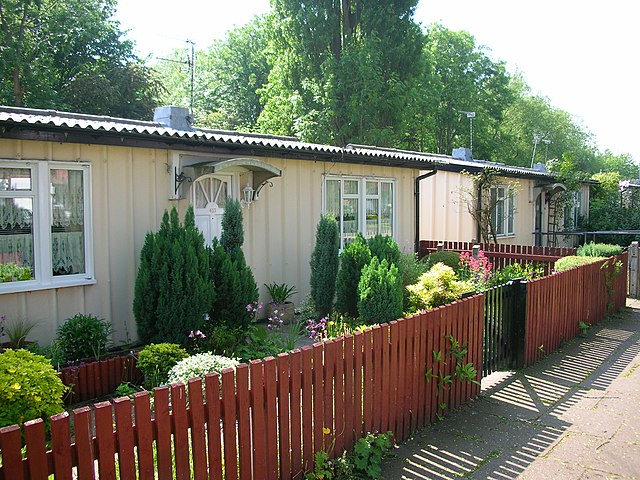Prefabs in the United Kingdom
Prefabs were a major part of the delivery plan to address the United Kingdom's post–World War II housing shortage. They were envisaged by war-time prime minister Winston Churchill in March 1944, and legally outlined in the Housing Act 1944.
An AIROH prefab on permanent display at the St Fagans National Museum of History, as it would have appeared in 1950
Airey houses in Seacroft, Leeds
BISF houses in Port Glasgow with modified (left) and original (right) cladding
Cornish Unit houses in Barnsley, South Yorkshire.
A council house or council flat is a form of British public housing built by local authorities. A council estate is a building complex containing a number of council houses and other amenities like schools and shops. Construction took place mainly from 1919 after the Housing Act 1919 to the 1980s, with much less council housing built since then. There were local design variations, but they all adhered to local authority building standards. The Housing Acts of 1985 and 1988 facilitated the transfer of council housing to not-for-profit housing associations with access to private finance, and these new housing associations became the providers of most new public-sector housing. The characterisation of council houses as 'problem places' was key for leading this movement of transferring public housing stock to the private arena. By 2003, 36.5% of the social rented housing stock was held by housing associations.
Semi-detached council house in Seacroft, Leeds, West Yorkshire
A mixture of council and ex-council housing (through Right to Buy scheme) in Hurlford, East Ayrshire, Scotland
Grade II listed Phoenix prefabs in Wake Green Road, Birmingham
1950s semi-detached PRC houses in Seacroft, Leeds, West Yorkshire








